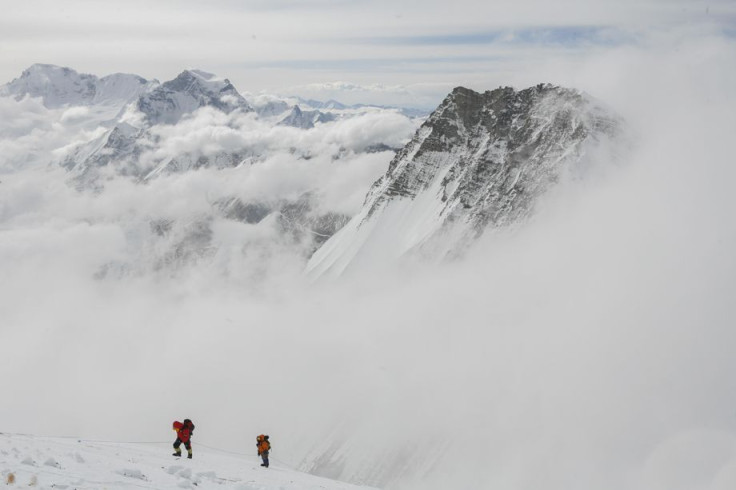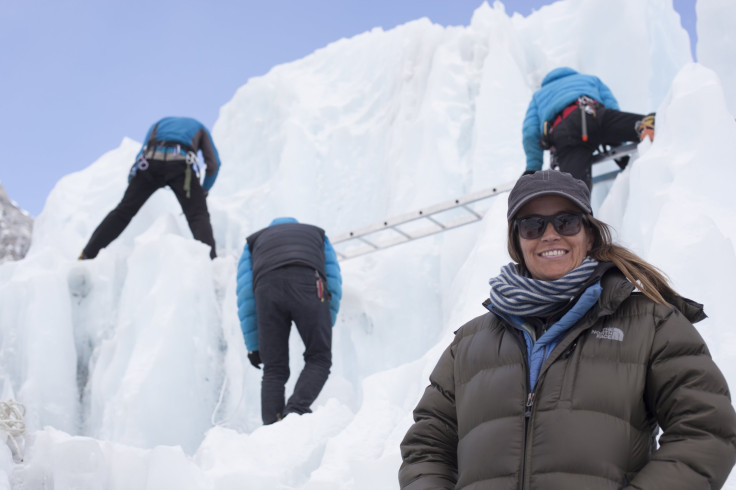Australian filmmaker Jennifer Peedom tells story of unsung Mt. Everest heroes with upcoming documentary ‘Sherpa’

The waiting music on the phone goes on for several minutes as I patiently wait for the connection on the other end. A chipper voice belonging to a representative interrupts the basic melody to tell me that award winning director Jennifer Peedom is ready to begin the interview.
Peedom’s voice is friendly but there’s a hint of tiredness in it. It’s 5pm on a Monday and one can only assume from it being the end of a business day and the media attention her new documentary “Sherpa” has been getting, that she’s been speaking with journalists and critics for the majority of the day.
But Peedom, like her work, powers through and gives thoughtful and insightful answers to my questions with a friendly demeanour.
“It’s been quite a ride,” the filmmaker says over the phone.
The ride she’s referring to is the seven weeks spent on the side of Mt. Everest shooting “Sherpa”, a film about the marginalised and forgotten Sherpa community that have assisted in countless ascents to the top of the near impossible mountain.
“I always felt the Sherpa side of things was always under-represented,” Peedom explains about her decision to document the often forgotten people on the tallest mountain in the world.
Peedom and I chat for a few minutes about our respective times in Nepal before we dive into her life and film. Talking about topics like the Nepalese earthquakes of 2015 and Nepal’s struggle as a tiny nation slated between two powerhouses, India and China, we both silently agreed it was time for the spotlight to fall on the small nation.

Having spent her honeymoon in 2006 in Nepal, where she has also worked on other film projects, makes Peedom no stranger to the country’s ways or people. She says there have been attempts at having a holiday in the South Asian country but things always seemed to transform into work.
Peedom took her first step to becoming a professional storyteller when she first appeared on the ABC series “Race Around Oz” over 16 years ago. When speaking about travelling now as a fully fledged raconteur, she explains that there’s no off switch to this line of work.
“These trips are a mix of personal and work for me. There’s always a blurred line between business and personal.”
The motivation for Peedom, 45, to make “Sherpa” came from her time filming previous projects in Nepal, where she witnessed how the Sherpas working on TV and film jobs took on most of the literal heavy lifting while the focus of the narrative was always on the ‘struggle’ of the western climbers attempting the summit.
The Australian director tried to tell the story of Sherpa guides for several years but ran into roadblocks each time. First, there were safety concerns in 2012 that led to an expedition being cancelled, while the following year saw a physical altercation between guides and tourists. But all of this didn’t deter Peedom and her crew. Instead the adversity showed them that there was a story that needed telling.
“We had a very strong instinct that we needed to be on the mountain the following year,” Peedom explains.
During the filming process in 2014, a tragedy nobody anticipated happened. In the early hours of April 18, a 14 million tonne block of ice fell onto a Mt. Everest climbing path, taking the lives of 16 Sherpas. It would be the biggest death toll on the mountain at the time (a year later 22 people would be killed during the 2015 Nepalese earthquakes).
Originally Peedom had the idea of centering the story on a female Sherpa’s first climb to the top of Everest. Peedom says the story was always going to be about the relationship between foreign climbers and the locals, just that now the key characters had to be altered.
The film’s scope landed on Phurba Tashi, a prominent member of the Sherpa community who would be attempting the Everest climb for the 22nd time. The deadly tragedy changed the trajectory of the narrative, but left the overall theme alone.
“For me, the story was always about the disproportionate risks that the Sherpas take. So the avalanche really threw all of that under a microscope more than anything else would.”
As the surviving Sherpas began a search and rescue for their missing friends and co-workers, Peedom knew it was best to tread lightly while telling this part of the story. She kept her Sherpa interpreter close by and relied on him to advise her through this touch-and-go period. She made sure her crew would film the rescue missions from a far enough distance so as not to identify any of the bodies.
“You have to trust your instincts,” she says.

The tourist climbers who were readying themselves for the adventure of a lifetime dealt with the news of these deaths in different ways, especially since the climb can cost a minimum of AU$40,000 or more. Most understood that the trek would be called off as a sign of respect for the dead and for their own safety. A minority wasn’t as empathic and met the cancelling of the climb with disdain.
Fed up with following the instructions of their western clients as well as the Nepalese government, the guides went on strike, rallying together to vent their pent up frustrations. Peedom says the anger from the Sherpas was largely directed at the country’s government for not providing better insurance and a rescue fund.
When the protests broke out on the side of the world’s tallest mountain, Peedom was advised by her interpreter not to film the demonstrations herself. But the Nepalese guides offered to film the action on their smartphones, turning “Sherpa” into a semi-guerilla shot documentary that jumps from professional crisp scenes of snowy mountaintops to amateur footage that cleanly piece together the complex story of life as a Sherpa at this time.
Even though anger and frustration was flowing through the thin mountain air, no repeat of 2013’s violence occurred. “There were rumours and threats of violence but none of them turned out to amount to anything,” remembers Peedom. “I personally never felt [I was] in any danger.”
Through her delicate and respectful methods of filming, Peedom inadvertently got the Sherpa community to open up to her and her crew, with several guides volunteering to be interviewed for the documentary in an attempt to get their voices and demands heard. Some even made sure that Peedom had a clear view to film the arrival of a minister from the Nepalese government who was flown in by helicopter to have talks with the Sherpa community leaders.
“Sherpa” has opened up on big screens in the west to even bigger audiences while cleaning up on the awards circuit -- the film won Best Documentary from both the Film Critics Circle Awards Australia and BFI London Film Festival, as well as getting a BAFTA nomination -- but one of the first and maybe most important screenings was held in the Nepalese village where a lot of the Sherpas from the film live. To add to the charm even more, the documentary had to be projected onto a sheet for the small private audience.
As for the message of her film, Peedom says she hopes people wanting to climb Mt. Everest tread a little lighter than some of the predecessors.
“I would like to think people come away from the film and if they still want to climb Everest that they’re aware of what it means to Sherpa people and what risks they’re asking other people to take on their behalf, and to be respectful of that.”
“Sherpa” opens nationally on March 31.





















